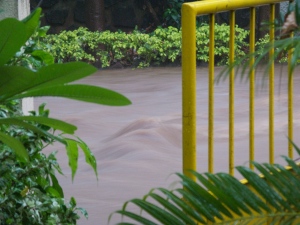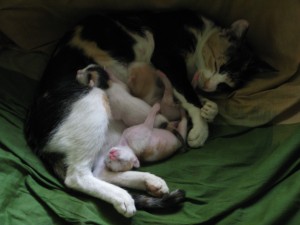“In this world of noise and confusion, each one of us needs a sanctuary.
A silent space to discover a new fragrance of life.”
– J. Krishnamurti

A two bedroom white house surrounded by tall trees. A wrap-around balcony studded with potted plants. Cane chairs, coir matting on the floor, wooden bookshelves filled to the brim. The gentle murmuring of voices. Occasionally, the shout of the young boys playing cricket at the dead-end of the street filters in: “Arrey, stand still, yaar. I told you not to move”, “Its out, its out, its out”, and more frequently, “Aunty, can you throw the ball down please?”
The Krishnamurti Centre is dedicated to the exploration of Jiddu Krishnamurti’s philosophy. There are five or six such centres across the country. Open for you to explore his teachings through his writings and video recordings. The quiet of the centre brings with it an automatic calming down of the body and the breath. (When we were there, a monk was meditating in the reading room). It encourages you to slow down from the minute you bend down to unbuckle your sandals, even before you turn a single page of a book.
The cane chairs, the matting and the bookshelves are all of a kind – – for anybody who has been through the Krishnamurti Foundation system (the schools, the retreats or the study centres), it is a sort of time-warp, one could guess what it would look and feel like even before opening the wire mesh front door (that creaks in just the right way), and stepping into the Centre. The furnishings are a sort of comfort in themselves, a comfort that comes from anticipation and a lack of surprises.
It had been a hurly-burly kind of day, with more busyness ahead of us. This small window of quiet was unexpected and precious. Sometimes, you do not even realize the need for a “silent space” (as JK put it), until you are in it.






